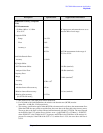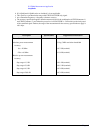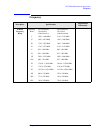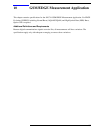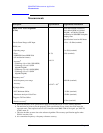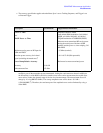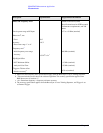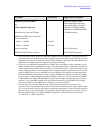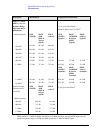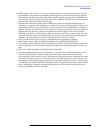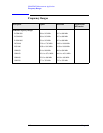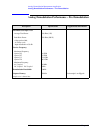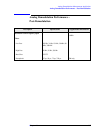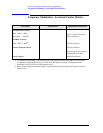
Chapter 10 139
GSM/EDGE Measurement Application
Measurements
Description Specifications Supplemental Information
Output RF Spectrum (ORFS)
and
EDGE Output RF Spectrum
GMSK modulation (GSM)
3π/8 shifted 8PSK modulation,
3π/4 shifted QPSK, π/4 shifted
16QAM, –π/4 shifted 32QAM
modulation in NSR/HSR (EDGE)
Minimum carrier power at RF Input −20 dBm (nominal)
ORFS Relative RF Power Uncertainty
a
Due to modulation
a. The uncertainty in the RF power ratio reported by ORFS has many components. This specification does
not include the effects of added power in the measurements due to dynamic range limitations, but does
include the following errors: detection linearity, RF and IF flatness, uncertainty in the bandwidth of the
RBW filter, and compression due to high drive levels in the front end.
Offsets ≤ 1.2 MHz ±0.26 dB
Offsets ≥ 1.8 MHz ±0.27 dB
Due to switching
b
b. The worst-case modeled and computed errors in ORFS due to switching are shown, but there are two
further considerations in evaluating the accuracy of the measurement: First, Agilent has been unable to
create a signal of known ORFS due to switching, so we have been unable to verify the accuracy of our
models. This performance value is therefore shown as nominal instead of guaranteed. Second, the stan-
dards for ORFS allow the use of any RBW of at least 300 kHz for the reference measurement against
which the ORFS due to switching is ratioed. Changing the RBW can make the measured ratio change
by up to about 0.24 dB, making the standards ambiguous to this level. The user may choose the RBW
for the reference; the default 300 kHz RBW has good dynamic range and speed, and agrees with past
practices. Using wider RBWs would allow for results that depend less on the RBW, and give larger
ratios of the reference to the ORFS due to switching by up to about 0.24 dB.
±0.17 dB (nominal)
ORFS Absolute RF Power Accuracy
c
c. The absolute power accuracy depends on the setting of the input attenuator as well as the sig-
nal-to-noise ratio. For high input levels, the use of the electronic attenuator and “Adjust Atten for Min
Clip” will result in high signal-to-noise ratios and Electronic Input Atten > 2 dB, for which the absolute
power accuracy is best. At moderate levels, manually setting the Input Atten can give better accuracy
than the automatic setting. For GSM and EDGE, “high levels” would nominally be levels above
+1.7 dBm and −1.3 dBm, respectively.
±0.27 dB (95th percentile)



